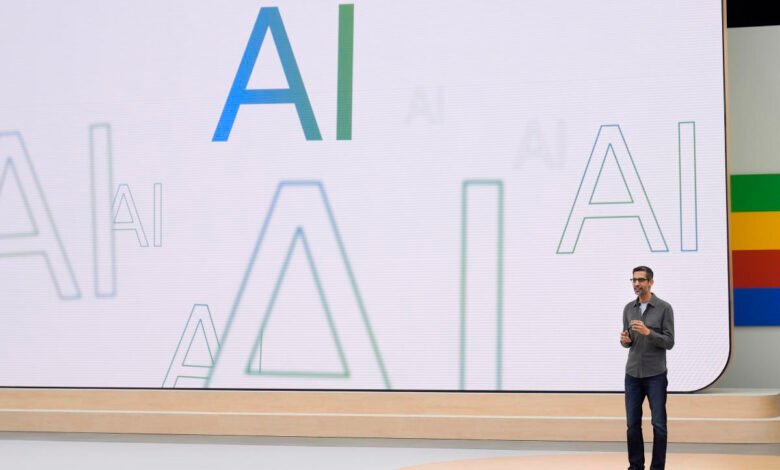Google’s greenhouse gas emissions climbed nearly 50 percent in five years due to AI

Google’s greenhouse gas emissions spiked by nearly 50 percent in the last five years thanks to energy-guzzling data centers required to power artificial intelligence, according to the company’s 2024 Environmental Report on Tuesday. The report, which Google releases annually, shows the company’s progress towards meeting its self-proclaimed objective of becoming carbon neutral by 2030.
Google released 14.3 million metric tons of carbon dioxide in 2023, the report states, which was 48 percent higher than in 2019, and 13 percent higher than a year before. “This result is primarily due to increases in data center energy consumption and supply chain emissions,” said Google in the report. “As we further integrate AI into our products, reducing emissions may be challenging due to increasing energy demands associated with the expected increases in our technical infrastructure investment.”
Google’s report spotlights the environmental impact that the explosion of artificial intelligence has had on the planet. Google, Microsoft, Amazon, Meta, Apple and other tech companies plan to pour billions of dollars into AI, but training AI models requires enormous amounts of energy. Using AI features uses significant amounts of energy too. In 2023, researchers at AI startup Hugging Face and Carnegie Mellon University that generating a single image using artificial intelligence can use as much energy as charging a smartphone. Analysts at Bernstein said that AI would “double the rate of US electricity demand growth and total consumption could outstrip current supply in the next two years,” the Financial Times . Last month, Microsoft, which also pledged to go “carbon negative” by the end of this decade, that its greenhouse gas emissions had risen nearly 30 percent since 2020 due to the construction of data centers.
Google’s report said that the company’s data centers were using way more water than before to stay cool as a result of expanded AI workloads. Some of those workloads so far have involved Google Search that people eat rocks and put glue on their pizza to prevent the cheese from falling off, as well as Gemini, the company’s AI-powered chatbot, generating images of .
In 2023, Google’s data centers consumed 17 percent more water than the year before. That’s 6.1 billion liters, enough to irrigate approximately 41 golf courses annually in the southwestern United States, according to the company’s strangely kooky measure.
“As our business and industry continue to evolve, we expect our total GHG (greenhouse gas) emissions to rise before dropping toward our absolute emissions reduction target,” Google’s report stated, without explaining what would precipitate the drop. “Predicting the future environmental impact of AI is complex and evolving, and our historical trends likely don’t fully capture AI’s future trajectory. As we deeply integrate AI across our product portfolio, the distinction between AI and other workloads will not be meaningful.”
This article contains affiliate links; if you click such a link and make a purchase, we may earn a commission.
Source link




